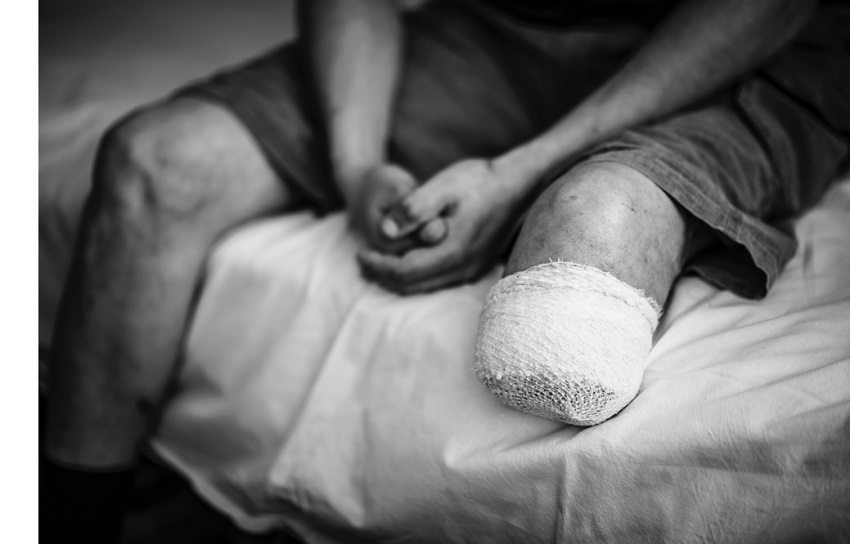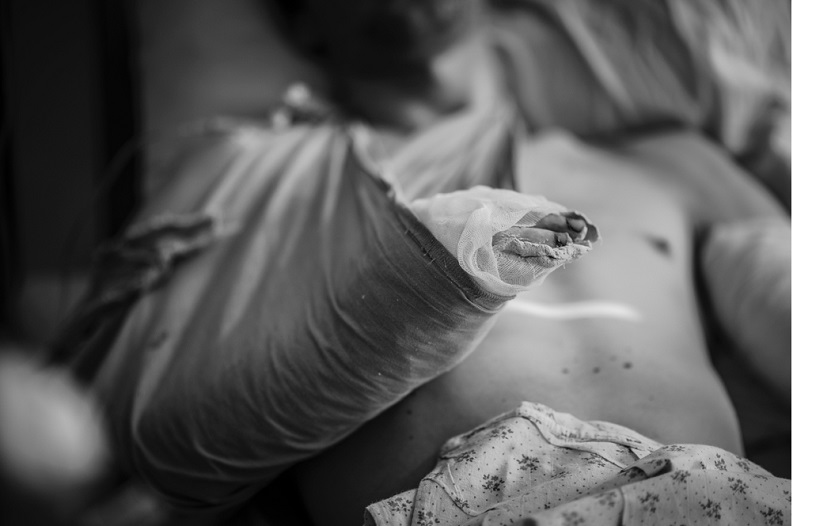A wedding in a Ukrainian hospital made international news last week for its bittersweet circumstances. The bride, a 23-year-old nurse named Oksana Balandina, lost both legs and four fingers to a Russian landmine in late March. By early May, her wounds had healed to the point that she could don a wedding dress and marry her longtime partner, Viktor Vasyliv. A video of their first nuptial dance went viral on social media and gave rise to headlines like: “Double-amputee war victim’s wedding heartens Ukraine.”
“I did not want to live,” Balandina told Reuters. “I have two children. I didn’t want them to see me like this. I did not want to be a burden for anyone in my family. But I need to keep living. If God left me alive, that is my destiny.”
Balandina will travel to Germany to rehabilitate and get fitted for prosthetic legs. But most amputee victims of the Russian invasion aren’t nearly as lucky. While it’s impossible to gauge the number of cases like this one with any certainty, we can safely guess it’s in the hundreds, if not thousands. One official from a Ukrainian government hospital in Kyiv told Amplitude that roughly 1,000 amputees are awaiting treatment in that facility alone, an estimated 800 of whom lost limbs in the Russian invasion that began on February 24. Only three prosthetic technicians are available at that hospital to deal with the backlog. We heard a similar report from a limb-loss clinic in Odessa, roughly 300 miles south of Kyiv, where the influx of patients is overwhelming the capacity to provide treatment.
Russian weapons aren’t the only cause of limb loss in Ukraine. The nation’s human rights minister told Business Insider that civilians who were captured by Russian forces lost limbs due to frostbite, sepsis, and beatings they suffered during their captivity. And these accounts don’t include all the military combatants (both Ukrainian and Russian) who’ve lost limbs in the fighting, nor the refugees who’ve escaped to Poland, Romania, Hungary, Moldova, and elsewhere.
As we learned in a recent article about the 2013 Boston Marathon bombing, just a few dozen traumatic limb-loss victims can put a whole city’s health-care system under duress. Cities throughout Ukraine are trying to care for 10 times (or more) as many patients, with far fewer resources and trained personnel than Boston could muster. The US prosthetics industry has begun mobilizing to assist amputee victims of the Russian invasion, but it takes more than good intentions to make an impact. In conversations with individual practitioners, nonprofit organizations, government agencies, and prosthetics manufacturers, we’ve learned of the many logistical knots that have to be untangled before an aid mission can get off the ground. Key questions that have to be answered include:
Who are the patients?
Limb loss is a journey, not a fixed condition, and interventions vary at different segments of the healing trajectory. There’s no benefit to fitting someone for a prosthesis if the initial swelling from their amputation hasn’t subsided, or if they’re dealing with concurrent injuries that need to be addressed before they can successfully adapt to a prosthesis. Likewise, the recovery arc for someone who lost a limb in a mortar attack differs from that of a patient who required amputation because they suffered frostbite, succumbed to sepsis, or lost access to insulin. So even if we’re told 1,000 amputees are awaiting limbs in a Kyiv hospital, it doesn’t necessarily follow that all 1,000 are ready for sockets.
Unfortunately, characterizing the limb-loss population is difficult even under ideal conditions; it may be impossible to compile this information reliably in an active war zone. So any practitioners who do travel to Ukraine will almost surely have to fly blind to an extent. They’re not likely to know precisely who needs treatment, nor what treatment they need, until they arrive.
What supplies best fit the need?
US health regulations forbid the reuse of a discarded prosthesis or component within the United States. But numerous agencies (including Penta Prosthetics, the Range of Motion Project, and the Limbs for Life Foundation) gather such material and ship it to underserved countries where prosthetic equipment is in short supply. However, it does no good to ship 500 prosthetic knees to a Ukrainian hospital if the facility’s biggest demand is for upper-limb devices. Likewise, there’s limited value in fitting a microprocessor device on a patient if the local technicians have never seen one, don’t know how it works, and can’t maintain the device over time.
As above, a degree of guesswork is probably unavoidable, as detailed information almost surely won’t be available. But donors do need to take the time to get a general sense of where their inventory can do the greatest good. They also want to know what facilities they can count on for secure receipt and storage of supplies. It’s a significant blow if donated equipment gets lost or stolen and ends up on the black market.
What capacity exists for socket fabrication?
Digital technologies such as 3D printing and laser scanning have vastly increased prosthetists’ ability to fit and mold sockets on a mobile basis. But to assist the hundreds or thousands of Ukrainian amputees who reportedly need treatment, aid volunteers will need to work from centralized locations that are well stocked with plaster, thermoplastics, ovens, grinding tools, and other equipment.
There are a limited number of such clinics within Ukraine, and the supply chains that serve them are spotty at best. Nations with greater capacity and deeper material reserves (such as Germany) are geographically inconvenient. So aid organizers must make their best guesstimate of the fabrication capacity that will be available at the point of care, and calibrate the size of their teams accordingly.
Who will provide follow-up care?
A relief mission might last a few weeks, but recovery from limb loss requires months or years of ongoing clinical care. International nonprofits who’ve worked in Central and South America, Africa, Southeast Asia, and elsewhere spend months and years cultivating relationships with local health professionals who can sustain patients’ recovery and rehabilitation long after the aid mission has left the scene. Those relationships will have to materialize quickly in Ukraine, lest the benefits of the initial fitting be lost due to lack of good aftercare.
Who will assist with translation?
You might be surprised at what a crucial factor this can be. Like most health-care specialties, prosthetics and limb care involve a fair amount of jargon, and there are only so many people who can translate those specialized terms from English into Ukrainian and back again. Lack of proficient translators can slow the provision of care to a crawl, blunting the effects of even a well-funded, well-staffed, well-supplied rescue effort.
In addition to all of the above, there are also basic considerations of ensuring food, lodging, transportation, and safety for everyone in the traveling party. And none of these needs can be met without adequate funding. But American prosthetists, manufacturers, and others in the limb-care community are working hard to clear all these hurdles. When one or more teams do head into the combat zone, Amplitude will provide updates about their work—along with information about how you can support them. So stay tuned.






